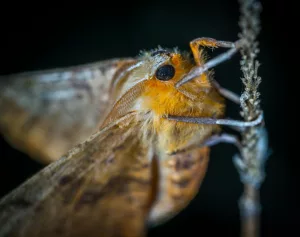Embarking on a nature hike with the ability to identify local wildlife is like opening a gateway to a hidden world. Each rustle of leaves, distant call, or fleeting shadow becomes a potential connection to the intricate tapestry of life that thrives in the wild. Let’s dive deeper into how you can enhance your wildlife identification skills, ensuring that each hike is an enriching experience. Research and Preparation Before setting foot on the trail, your journey begins at home with some good old-fashioned research. Understanding the wildlife you might encounter allows you to set realistic expectations and increases your chances of spotting specific species. Here’s how to prepare effectively:
Start with Local Resources
Field Guides and Books: Invest in a quality field guide specific to your region. Books like “Peterson Field Guide to Birds of North America” or “National Audubon Society Field Guide” are excellent starting points. They provide detailed illustrations and descriptions. These guides not only help you identify species but also offer insights into their habitats, behaviors, and conservation status. Consider annotating your guide with personal notes or sightings to make it an evolving resource.
Online Databases: Websites like eBird or iNaturalist offer up-to-date information on recent wildlife sightings and can help you understand what might be active in your area. These platforms often include maps that show where specific species have been observed recently, which can help you plan your hiking routes strategically.
Local Nature Centers: Many nature centers offer brochures or pamphlets detailing local wildlife. Some even have guided hikes where experts point out species along the way. Additionally, these centers may have live animal exhibits or interactive displays that can give you a closer look at the animals you might see on your hike.
Utilize Technology
Nature Identification Apps: Apps such as Seek by iNaturalist or Merlin Bird ID can be handy. With these apps, you can take a photo of a plant or animal, and they’ll help you identify it. These tools are particularly useful for beginners, providing instant feedback and learning opportunities in the field.
Podcasts and Videos: There are numerous wildlife-focused podcasts and YouTube channels that offer insights into animal behavior and identification tips. Listening to podcasts during your commute or watching videos at home can increase your familiarity with local species and their calls.
Observation Skills
Honing your observation skills is crucial to becoming adept at wildlife spotting. Here’s how to train your eyes and ears to notice the subtleties of the natural world:
Get to Know the Sounds
- Bird Calls and Songs: Birds are often heard before they are seen. Spend time listening to recordings of local bird calls. Apps like BirdNET can help you learn to identify birds by sound. Consider creating a playlist of bird songs that you can listen to while hiking to reinforce your learning.
- Animal Disturbances: Listen for rustling leaves, which could indicate a small mammal or reptile moving through the brush. The sound of a twig snapping could mean a larger animal is nearby. Practice differentiating between these sounds to improve your detection skills.
Look for Movement
- Peripheral Vision: Use your peripheral vision to detect movement. Wildlife often blends into the background, but movement can reveal their presence. Practice scanning your surroundings without moving your head, allowing your eyes to catch subtle shifts or flashes of color.
- Patience and Stillness: Sometimes, staying still and quiet in one spot is more productive than constantly moving. Animals often return to their activities when they no longer perceive you as a threat. Consider finding a comfortable spot to sit and observe for extended periods.
Knowledge of Habitats
Understanding the habitats you’re walking through can significantly enhance your wildlife encounters. Each species has preferred environments where they are more likely to thrive:
Ecosystem Exploration
- Wetlands and Water Bodies: Look for amphibians, waterfowl, and aquatic mammals near ponds and streams. Frogs and turtles are often hidden in plain sight. Pay attention to the edges of water bodies, where many creatures come to feed or drink.
- Forest Edges: These transitional zones between forests and open areas are rich in biodiversity. Deer, rabbits, and a variety of songbirds can often be found here. Observe the types of plants growing in these areas, as they often provide food and shelter for wildlife.
- Meadows and Grasslands: These open areas are great for spotting butterflies, insects, and certain bird species like sparrows and hawks. Use binoculars to scan the skies and tall grasses, where many animals forage and hunt.
Behavior Analysis
Studying animal behavior can offer clues not only for identification but also for understanding their roles in the ecosystem:
Behavioral Cues
- Feeding Habits: Observe what animals are eating. A squirrel munching on acorns, for instance, indicates the presence of oak trees in the area. Understanding dietary preferences can also help you anticipate where and when you might spot certain species.
- Social Structures: Noticing whether animals are in groups or alone can help with identification. For example, wolves hunt in packs, whereas foxes are often solitary. Recognizing social behavior patterns can also inform you about the health and dynamics of wildlife populations.
- Activity Patterns: Some animals are diurnal, active during the day, while others are nocturnal. Understanding these patterns can guide you on when to hike for the best chances of sightings. Consider planning hikes during dawn or dusk, when many animals are most active.
Seek Guidance
Learning from those with more experience can accelerate your wildlife identification skills:
Connect with Experts
- Guided Tours: Join guided hikes led by naturalists or park rangers. They can offer real-time identification tips and share interesting facts about the species you encounter. These tours often provide access to areas that might be difficult to navigate alone.
- Wildlife Workshops: Many parks and conservation organizations offer workshops on wildlife identification and ecology. These sessions can provide hands-on experience and a deeper understanding of local ecosystems.
- Community Groups: Engage with local hiking or birdwatching groups. These communities often share sightings and tips, providing a support network for learning. Participating in group outings can also increase your chances of spotting wildlife, as multiple eyes and ears are better than one.
Practice and Patience
Like any skill, wildlife identification improves with repetition and patience:
Continuous Learning
- Document Your Sightings: Keep a journal or digital log of the animals you spot. Note the date, time, location, and any distinctive behaviors. Over time, you’ll build a personal database of experiences. This record can be a valuable resource for tracking changes in wildlife patterns and personal growth as a naturalist.
- Photographic Evidence: Take photos of wildlife to review later. Even if you can’t identify the animal immediately, you can research it when you return home. Invest in a good camera with a zoom lens to capture clear images from a distance without disturbing the animals.
- Reflect and Adapt: After each hike, reflect on what you observed and consider what you might do differently next time to improve your chances of spotting wildlife. Analyze your successes and challenges to refine your strategies.
Common Mistakes to Avoid
Even the most experienced naturalists make mistakes. Here are some common pitfalls and how to avoid them:
Overlooking Small Details: Beginners often focus on larger animals and miss out on smaller species. Pay attention to insects, amphibians, and plants—they’re crucial to the ecosystem too. Take time to examine the ground and foliage, where many small creatures live.
Being Noisy: Loud voices and movements can scare away animals. Maintain a quiet demeanor to increase your chances of seeing wildlife. Practice walking softly and using hand signals to communicate with hiking partners.
Ignoring the Weather: Weather conditions affect animal behavior. For example, birds may be more active after a rain shower when insects are abundant. Check the forecast before heading out and adjust your plans accordingly.
Case Study: A Day on the Trail
Let’s put these tips into practice with a hypothetical scenario. Imagine you’re hiking in the Great Smoky Mountains. You’ve prepared by reading up on the local fauna, and you know that black bears are common in the park. With your field guide and app ready, you begin your hike early in the morning, when wildlife is most active.
Morning Observations You start by listening to the morning chorus of birds. A distinct call catches your attention, and using your app, you identify it as a Carolina chickadee. As you move quietly along the trail, you notice a rustling in the underbrush. Stopping, you spot a white-tailed deer nibbling on leaves—an exciting find!
Afternoon Sightings After a few hours, you reach a meadow. Armed with your knowledge of habitats, you scan the area and spot several butterflies dancing among the wildflowers. A sudden movement draws your eyes to a red-tailed hawk soaring above, scanning for prey.
Evening Encounters As the sun begins to set, you head toward a nearby stream. Here, you see a family of raccoons foraging along the water’s edge. You take a moment to observe their behavior, noting how they use their dexterous paws to search for food.
By the end of your hike, you’ve not only identified several species but also gained a deeper appreciation for the intricate web of life thriving in the park. Each encounter enhances your understanding and inspires a greater commitment to conservation.
Final Thoughts
Each hike in nature is an opportunity to learn and connect with the wild. By preparing thoroughly, honing your observation skills, and practicing patience, you’ll find that the world of wildlife opens up to you in remarkable ways. Keep exploring, stay curious, and cherish the incredible diversity of life that you discover along the trails.
Additional Resources and Tips
For those looking to delve even deeper into wildlife identification, consider exploring these additional resources and strategies:
Expand Your Library
- Additional Field Guides: Consider expanding your collection to include guides on insects, trees, and wildflowers. These can provide context for the habitats you explore and enhance your understanding of the ecosystem.
- Specialized Books: Look for books focused on animal tracks, scat identification, and other signs of wildlife presence. These can help you identify species even when animals themselves are not visible.
Join Citizen Science Projects Participate in citizen science programs that contribute to wildlife research and conservation. Projects like the Audubon Christmas Bird Count or local bioblitz events allow you to contribute to scientific knowledge while learning from experts and fellow enthusiasts.
Travel and Explore Diverse Ecosystems Whenever possible, explore different ecosystems beyond your local area. Traveling to different regions exposes you to new species and habitats, broadening your understanding of wildlife diversity. Consider visiting national parks, wildlife refuges, and other protected areas to experience a wide range of environments.
Develop a Personal Wildlife Philosophy Reflect on your experiences and develop a personal philosophy toward wildlife observation and conservation. Consider what role you want to play in preserving natural habitats and educating others about the importance of biodiversity.
Through dedication and a genuine passion for the natural world, your wildlife identification skills will continue to grow, enriching your hikes and fostering a lifelong love for the great outdoors.



